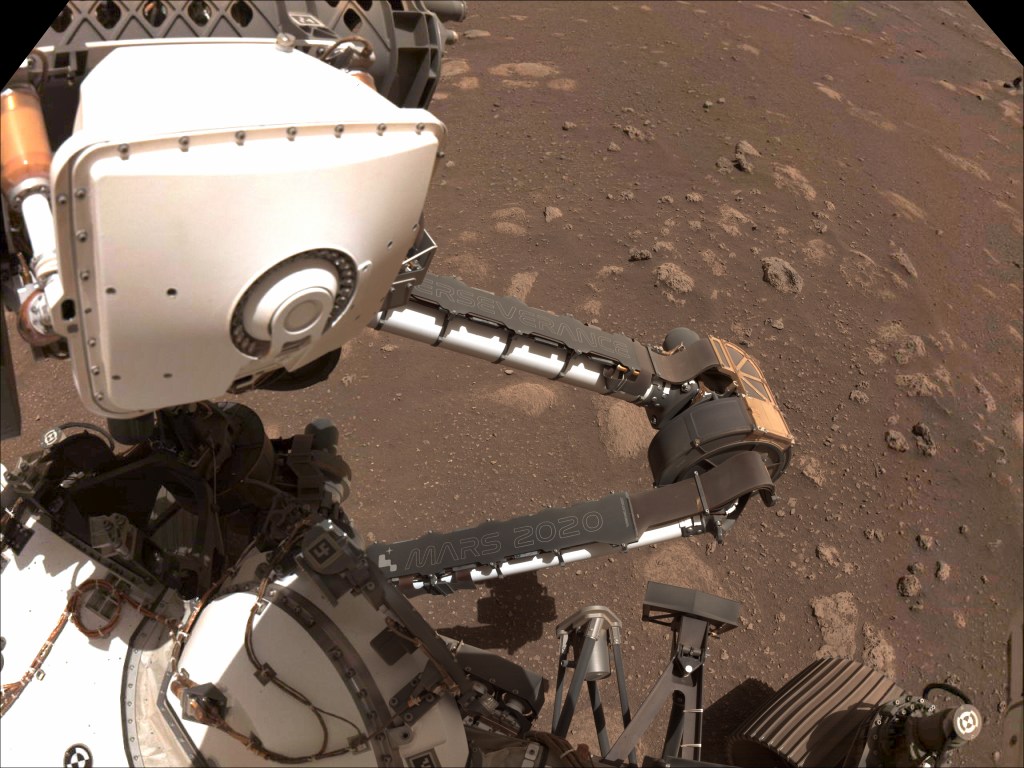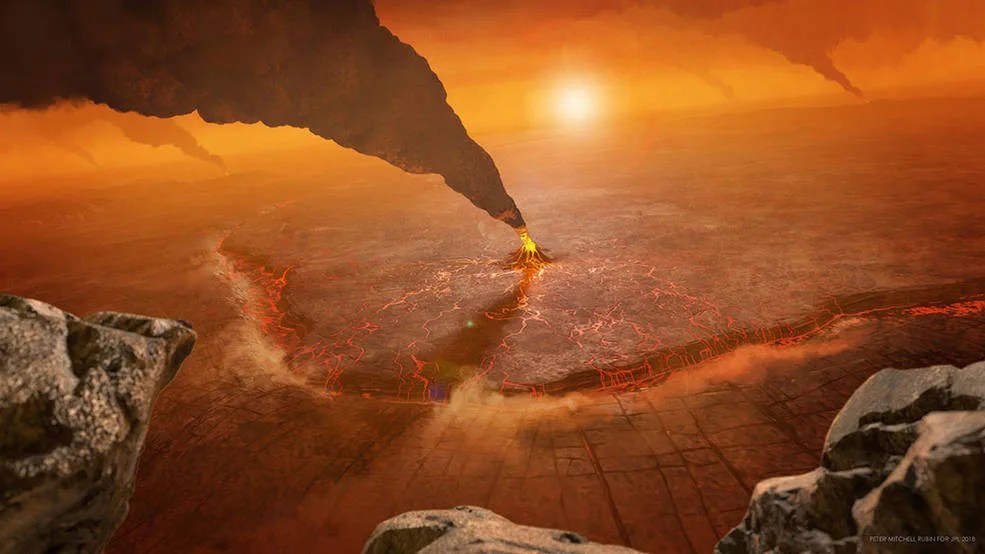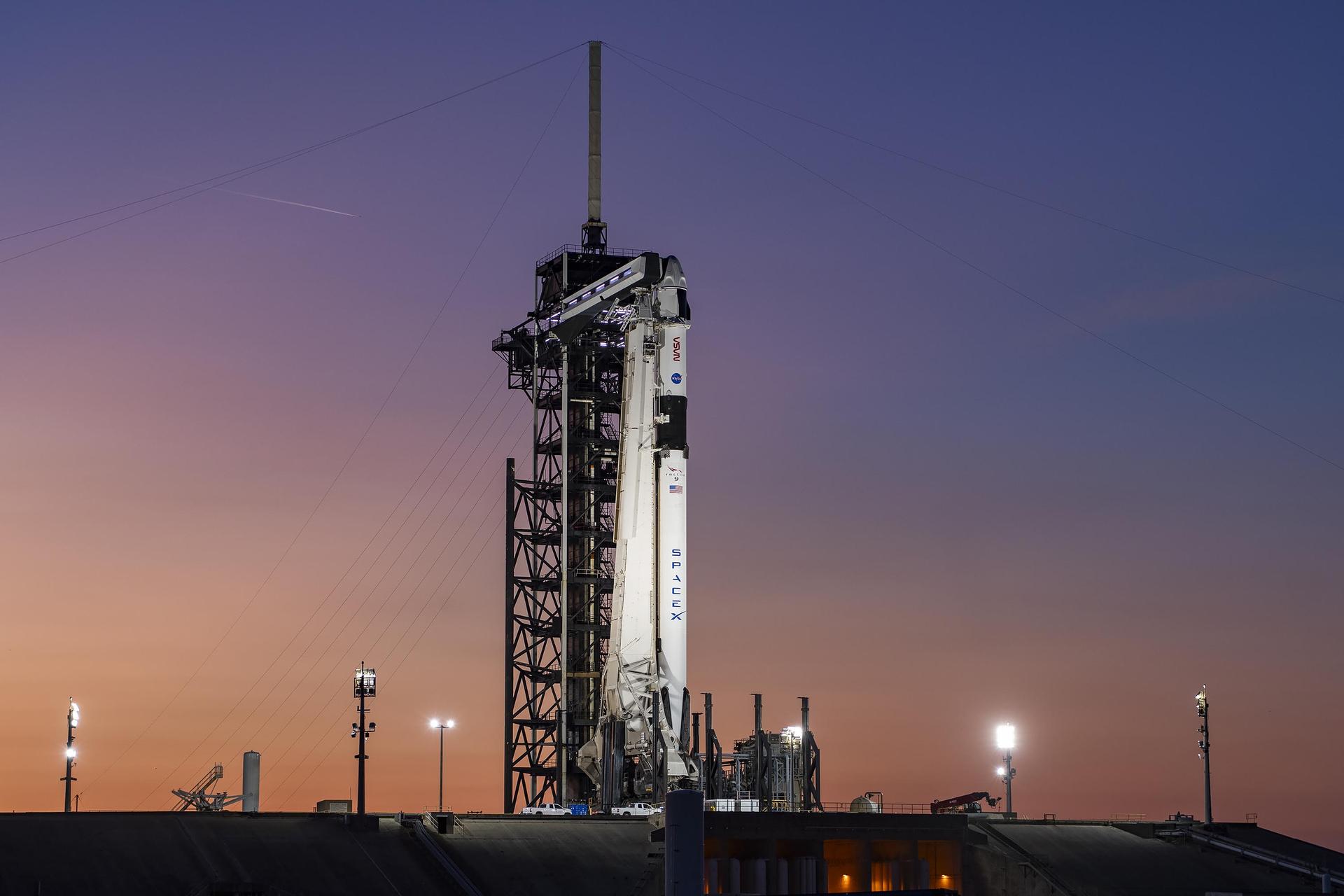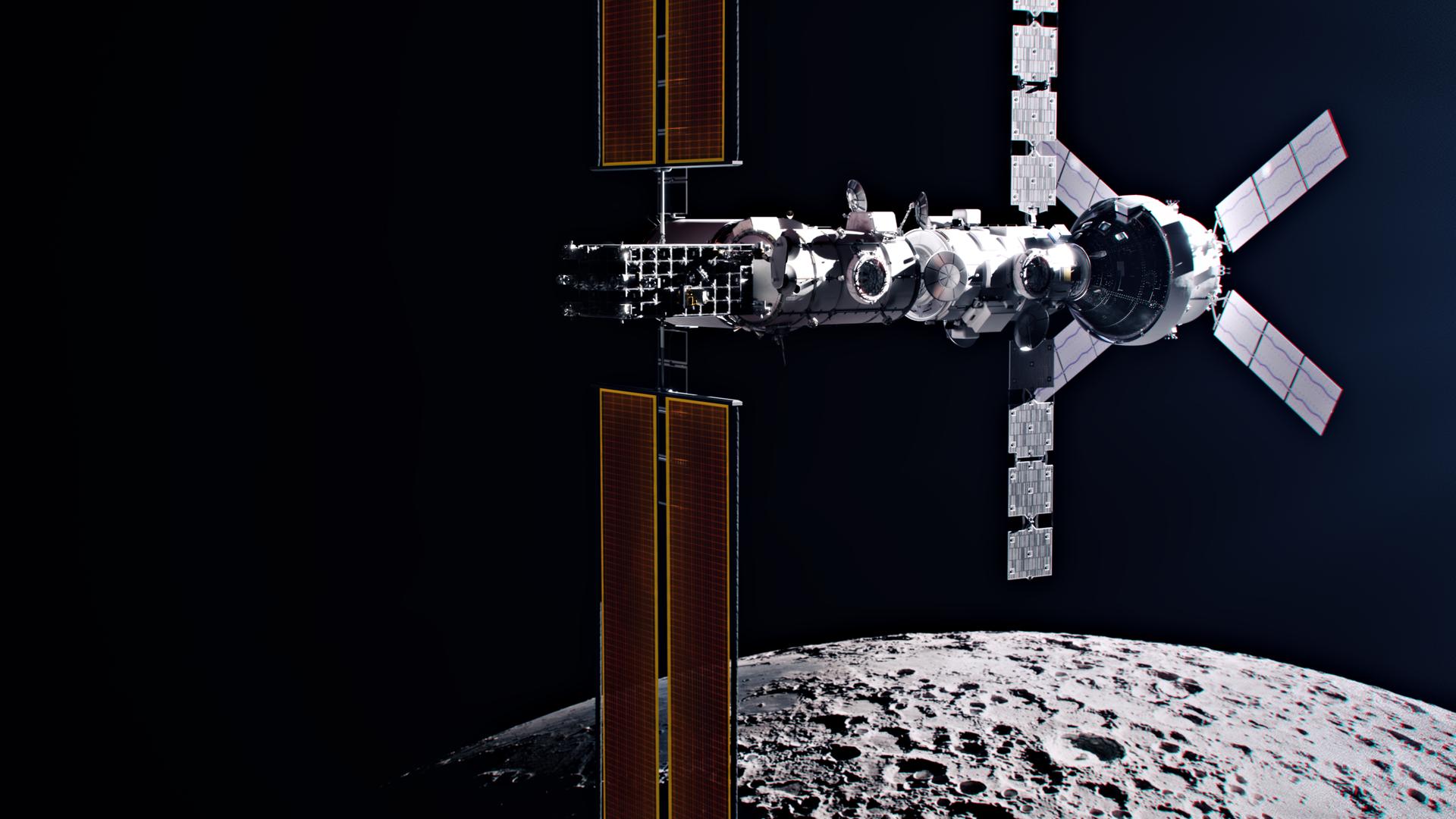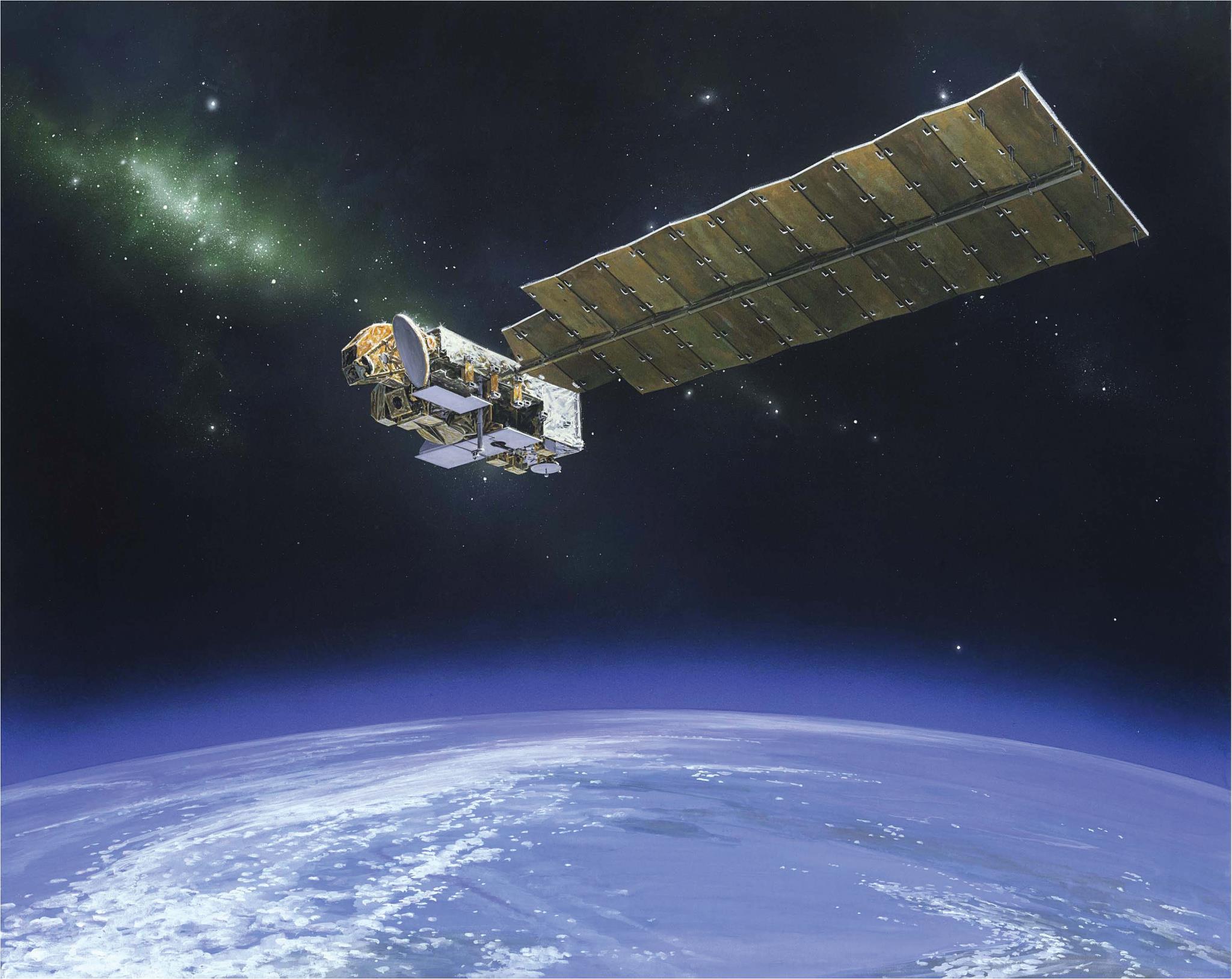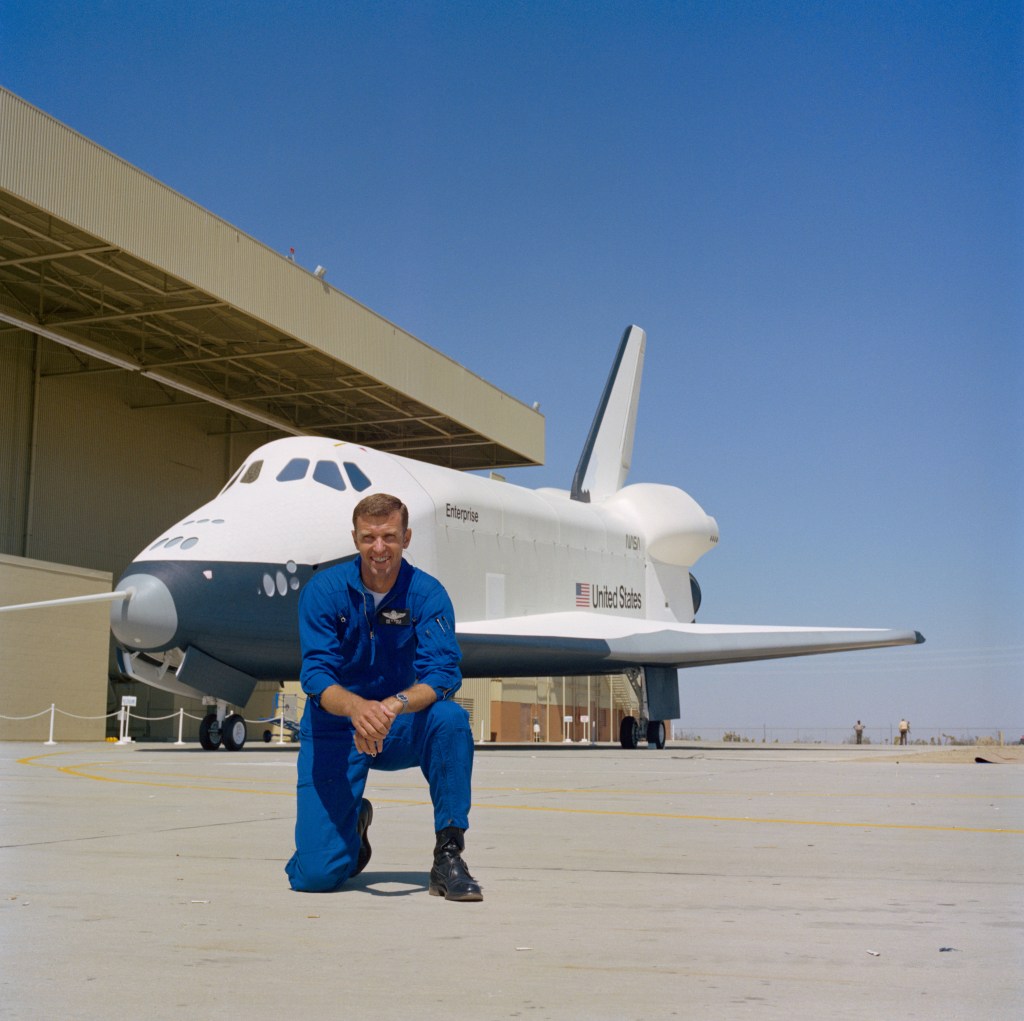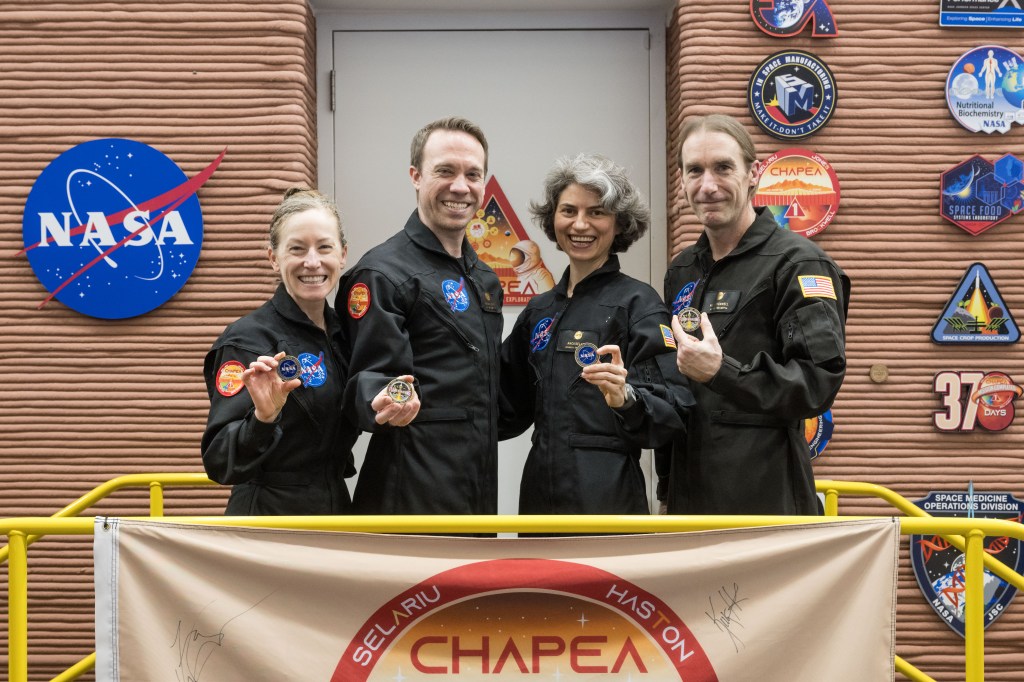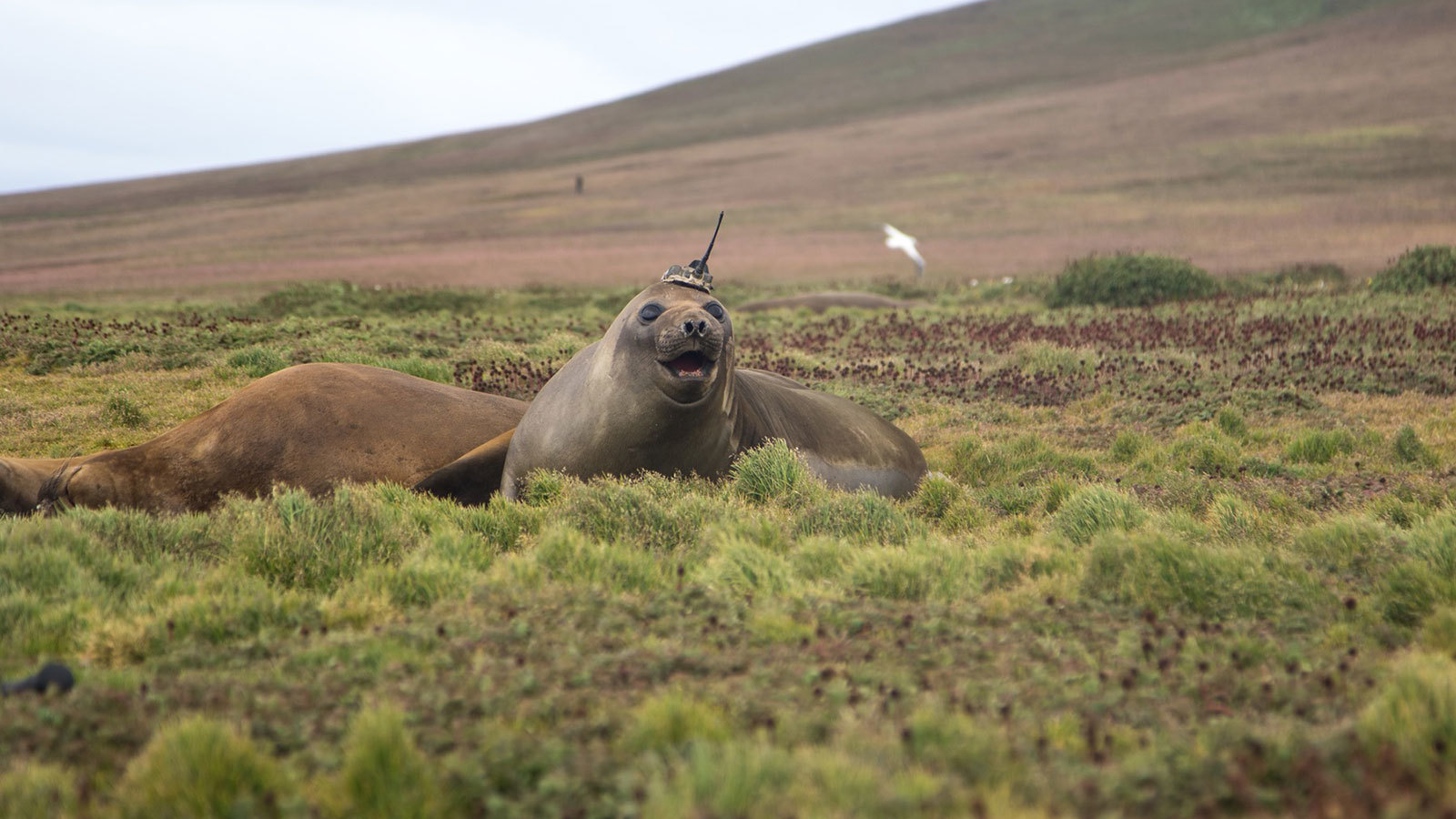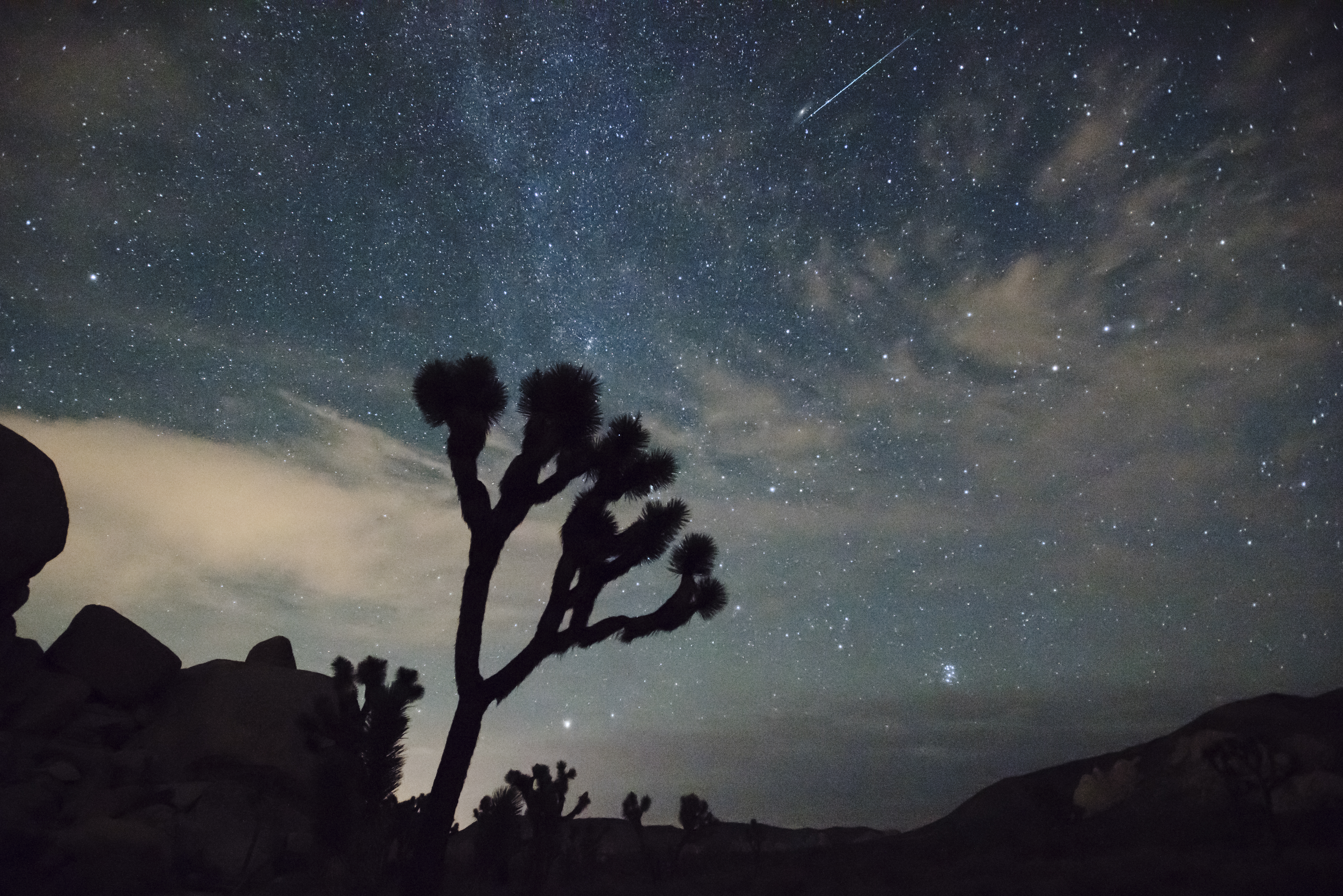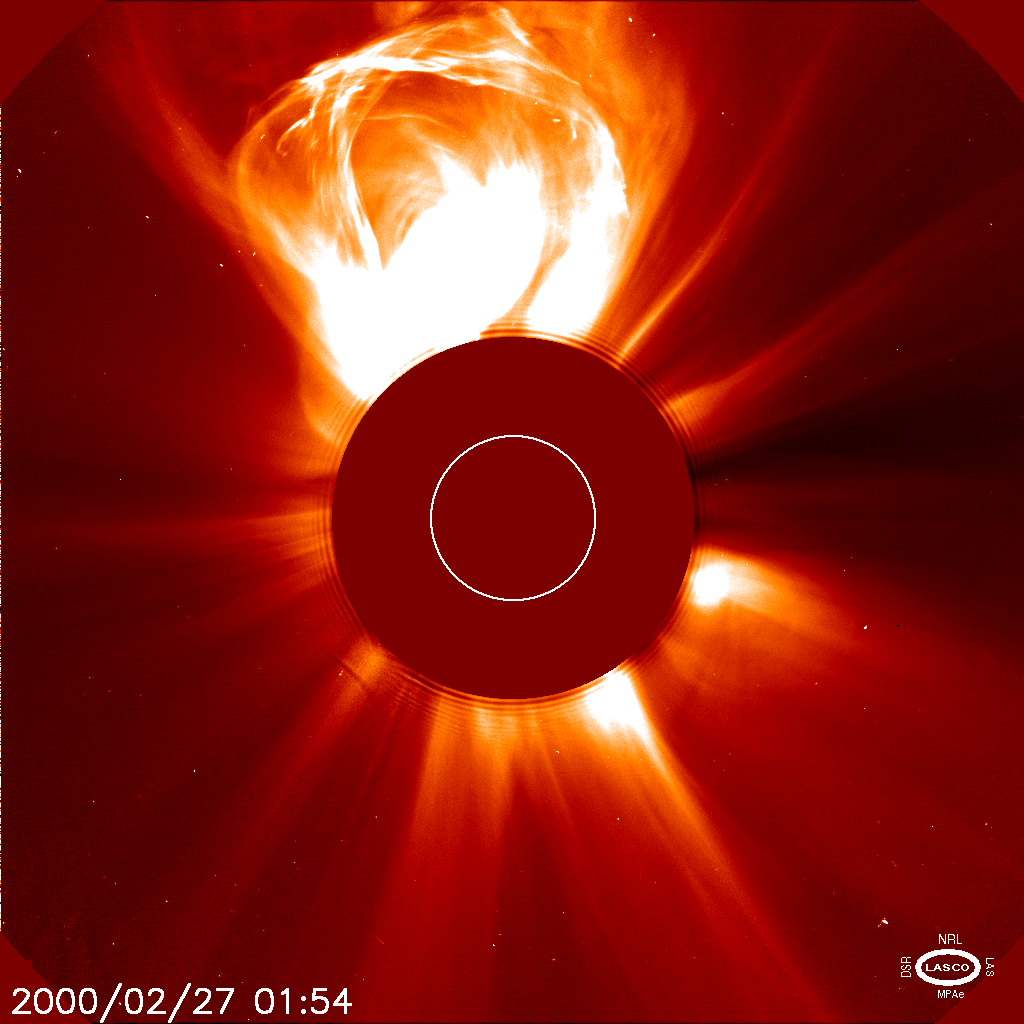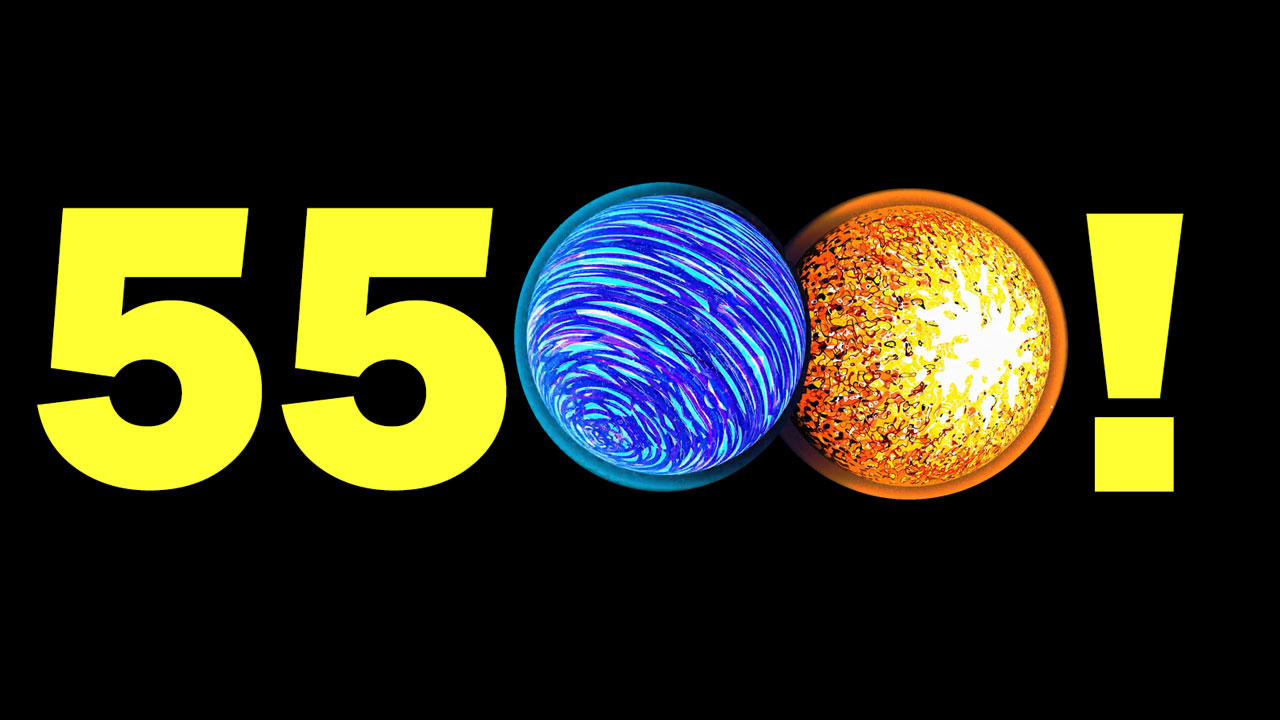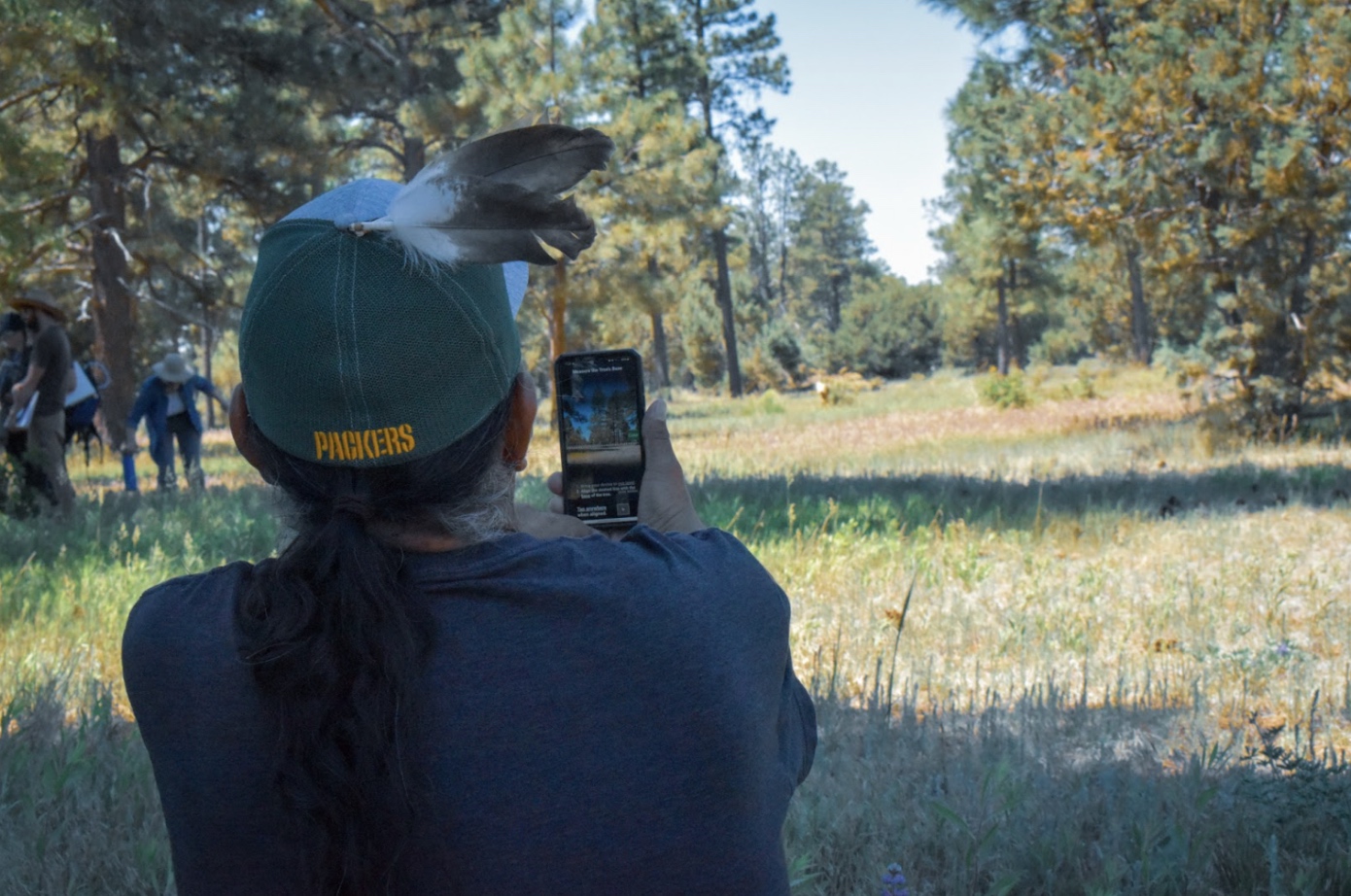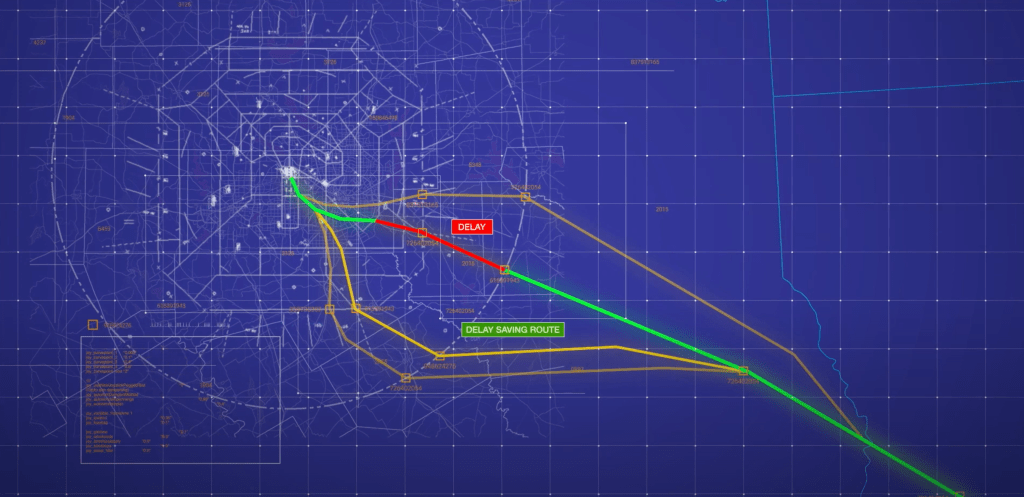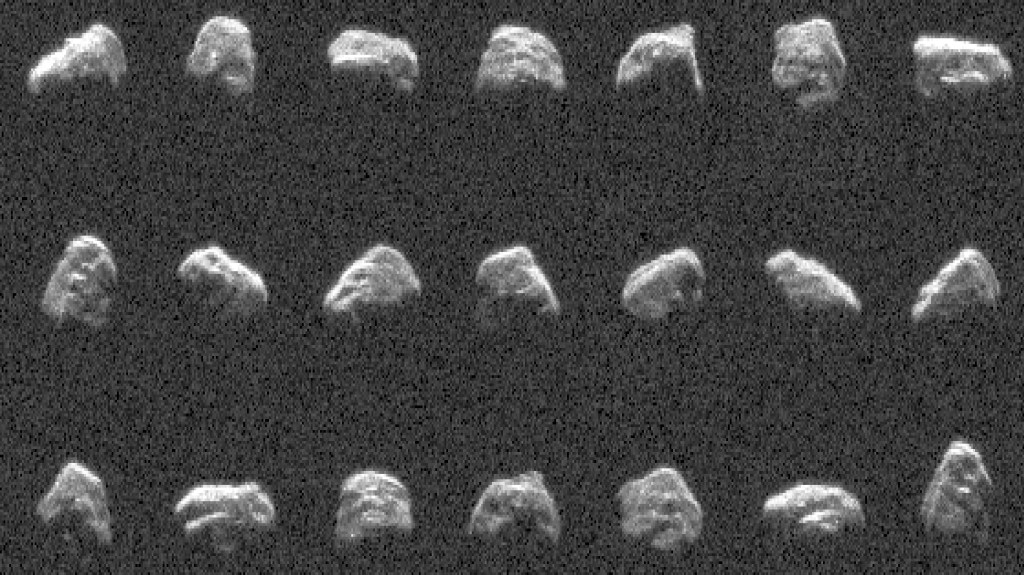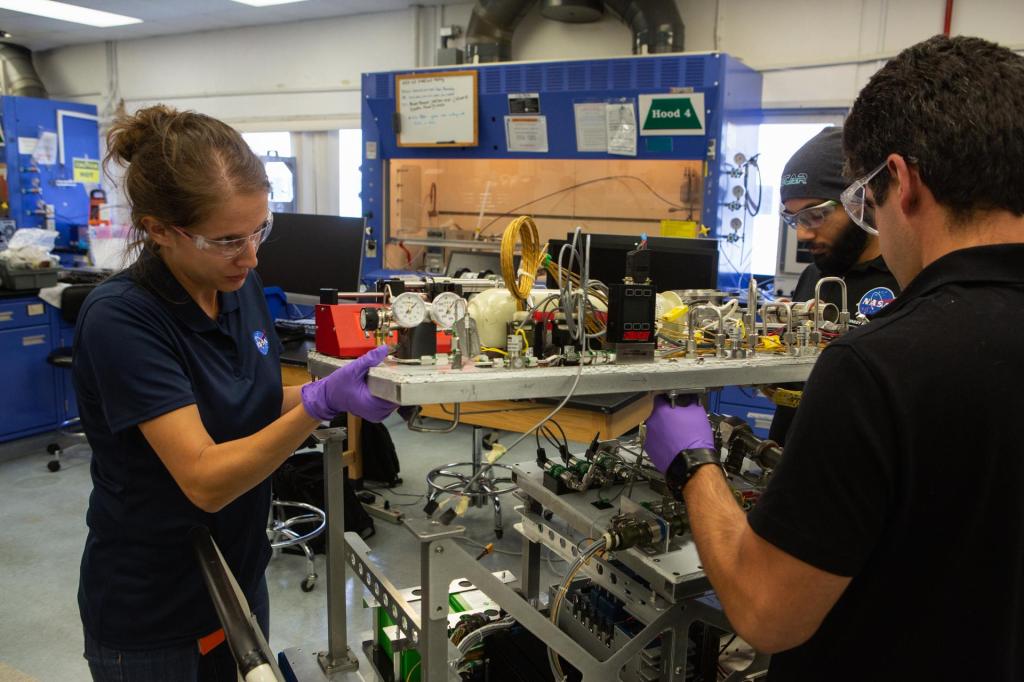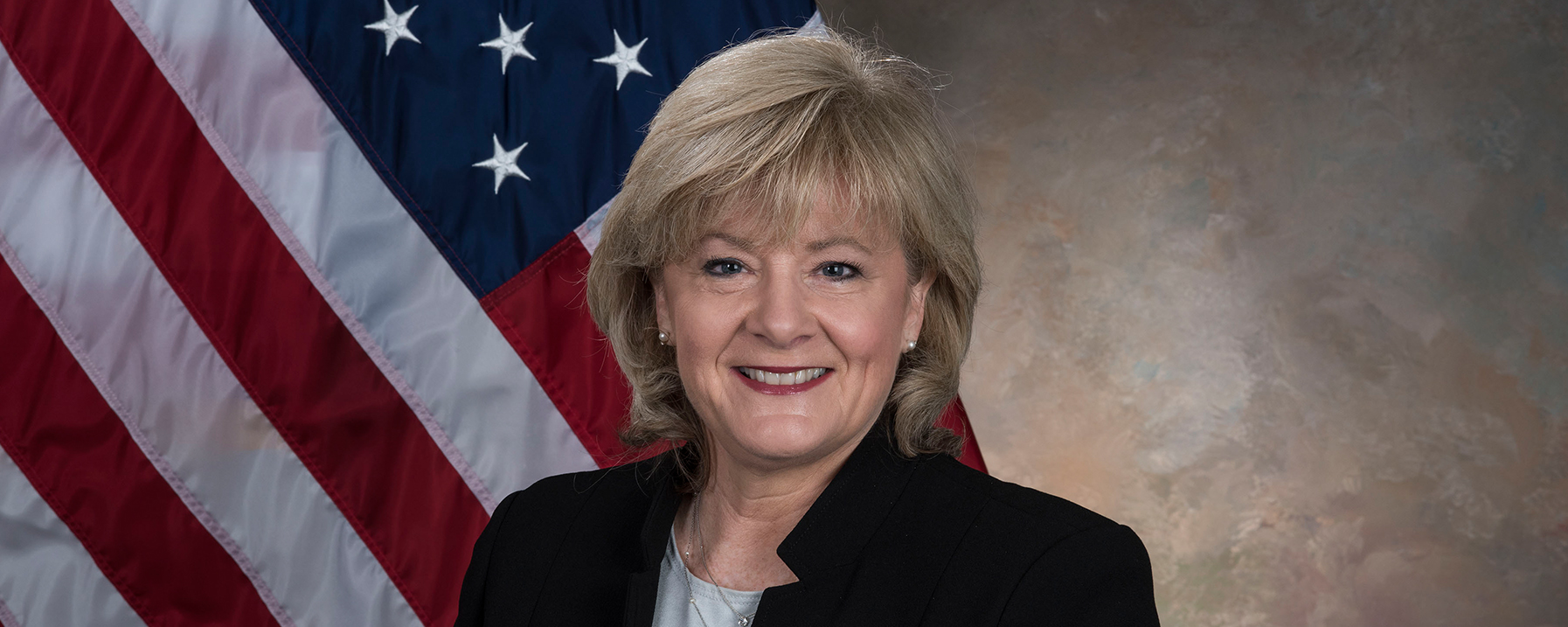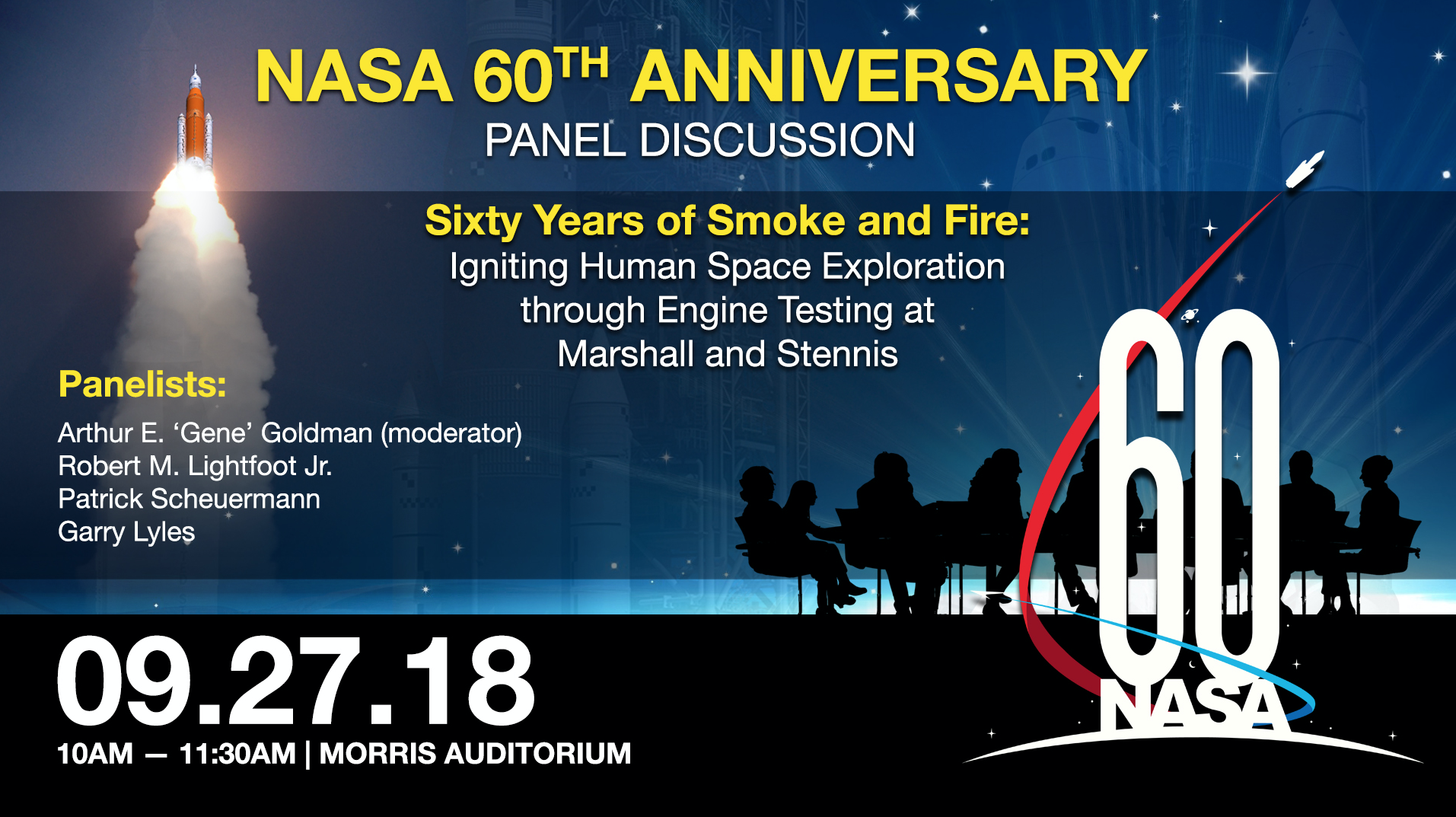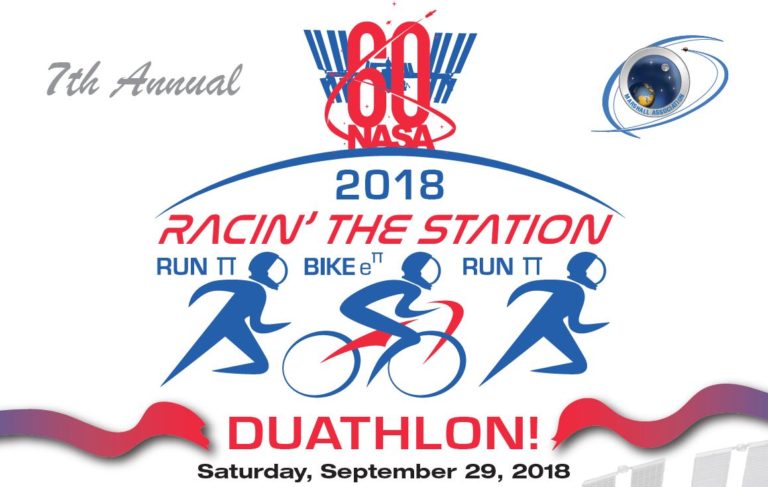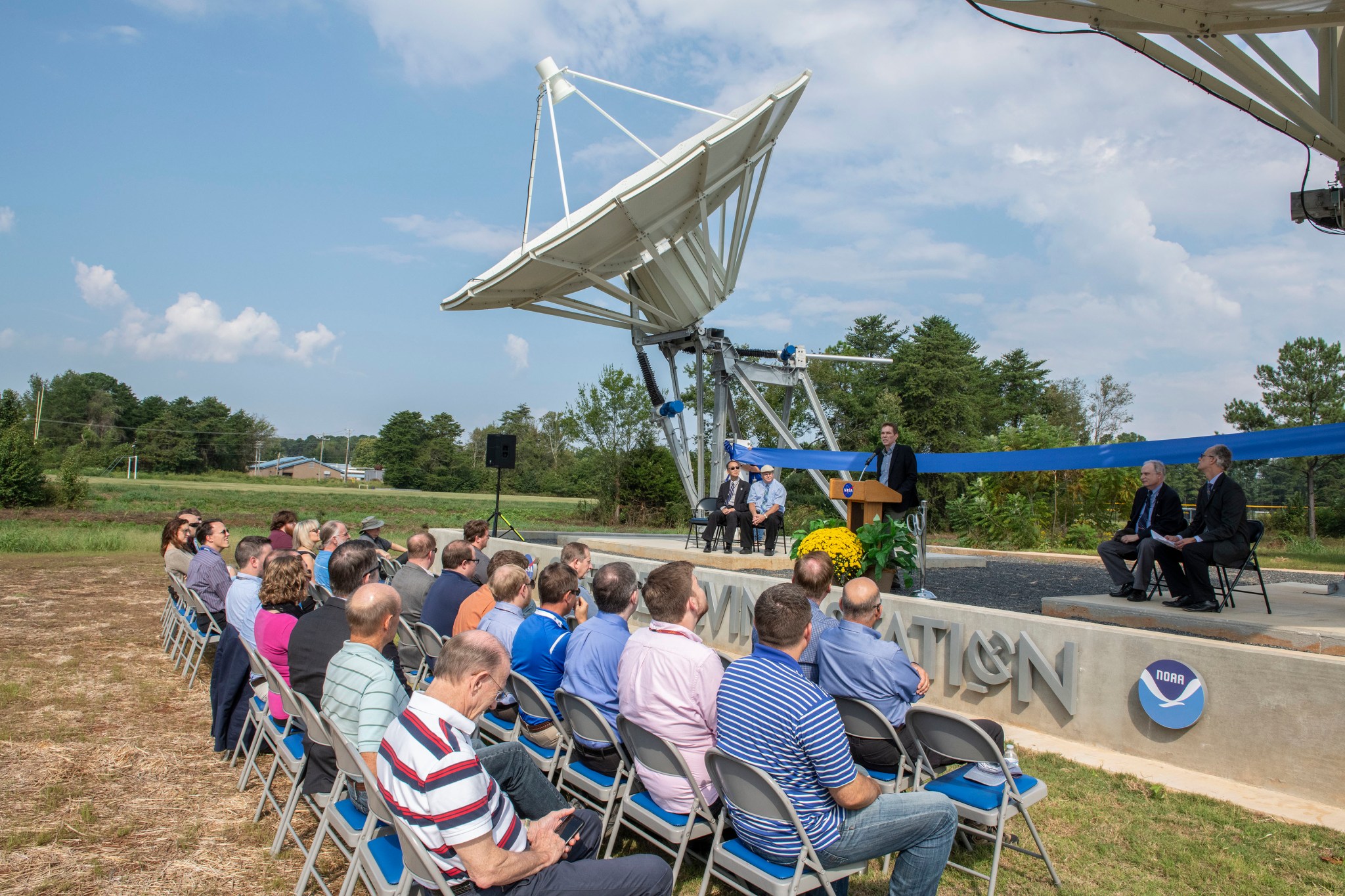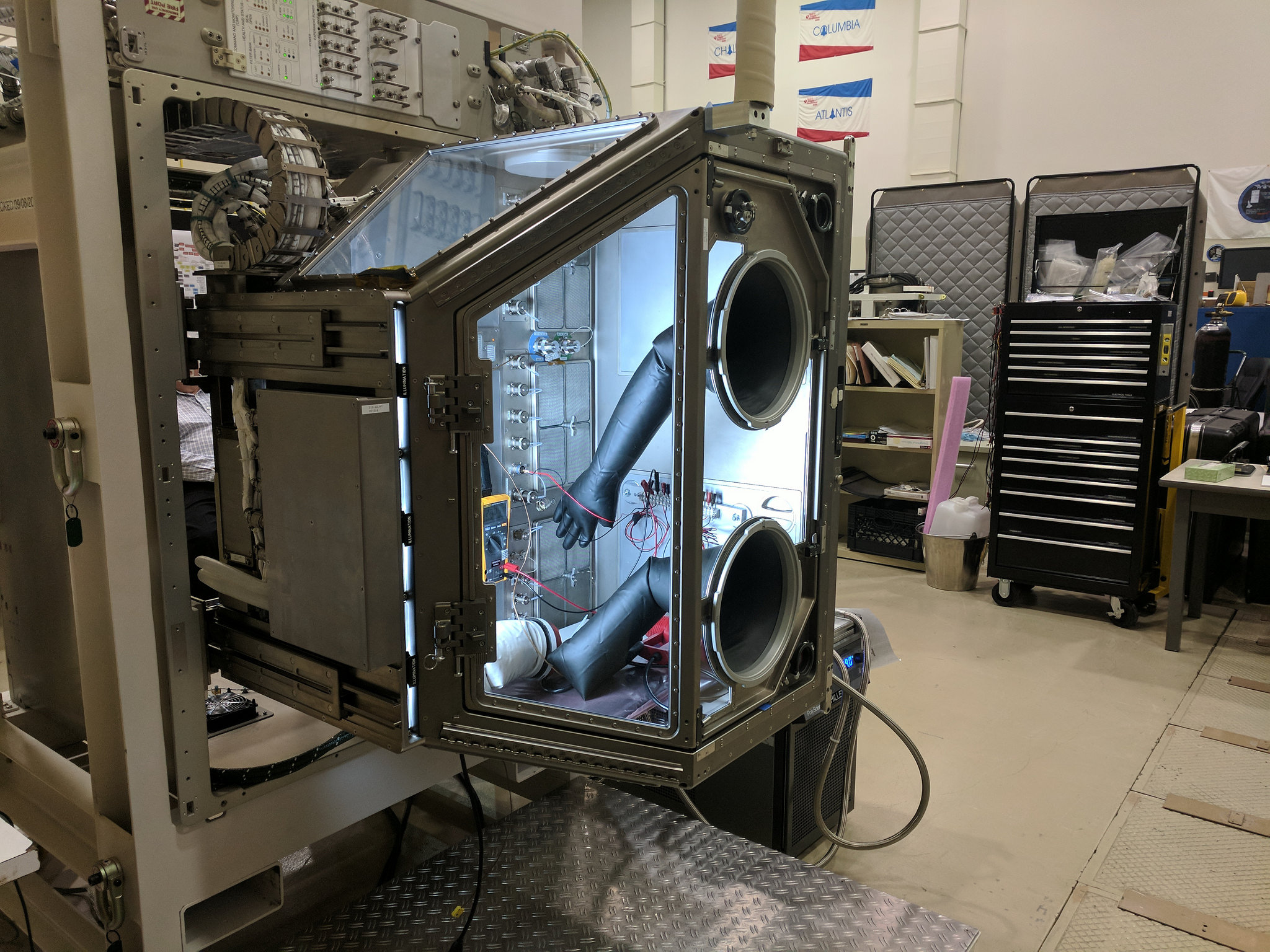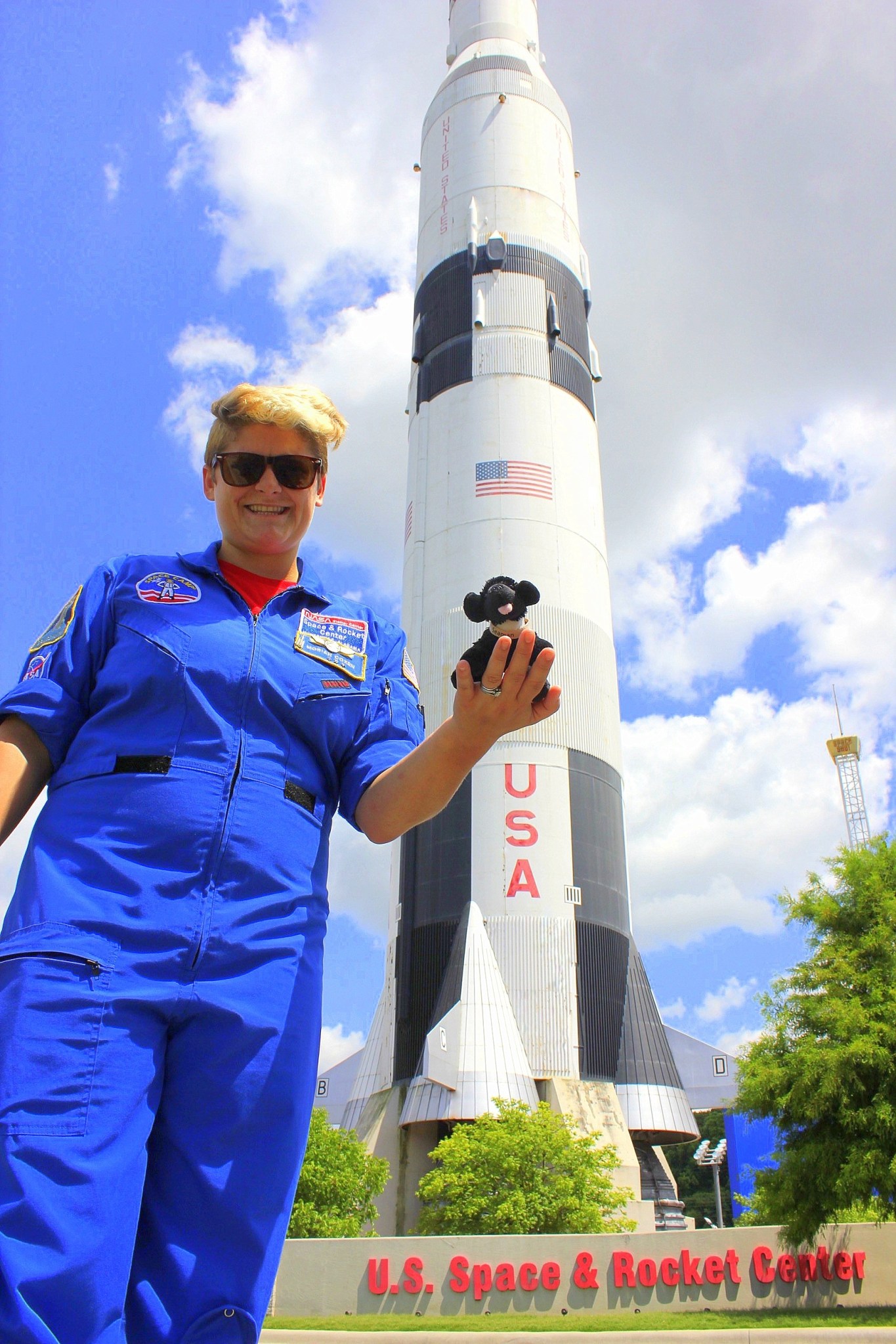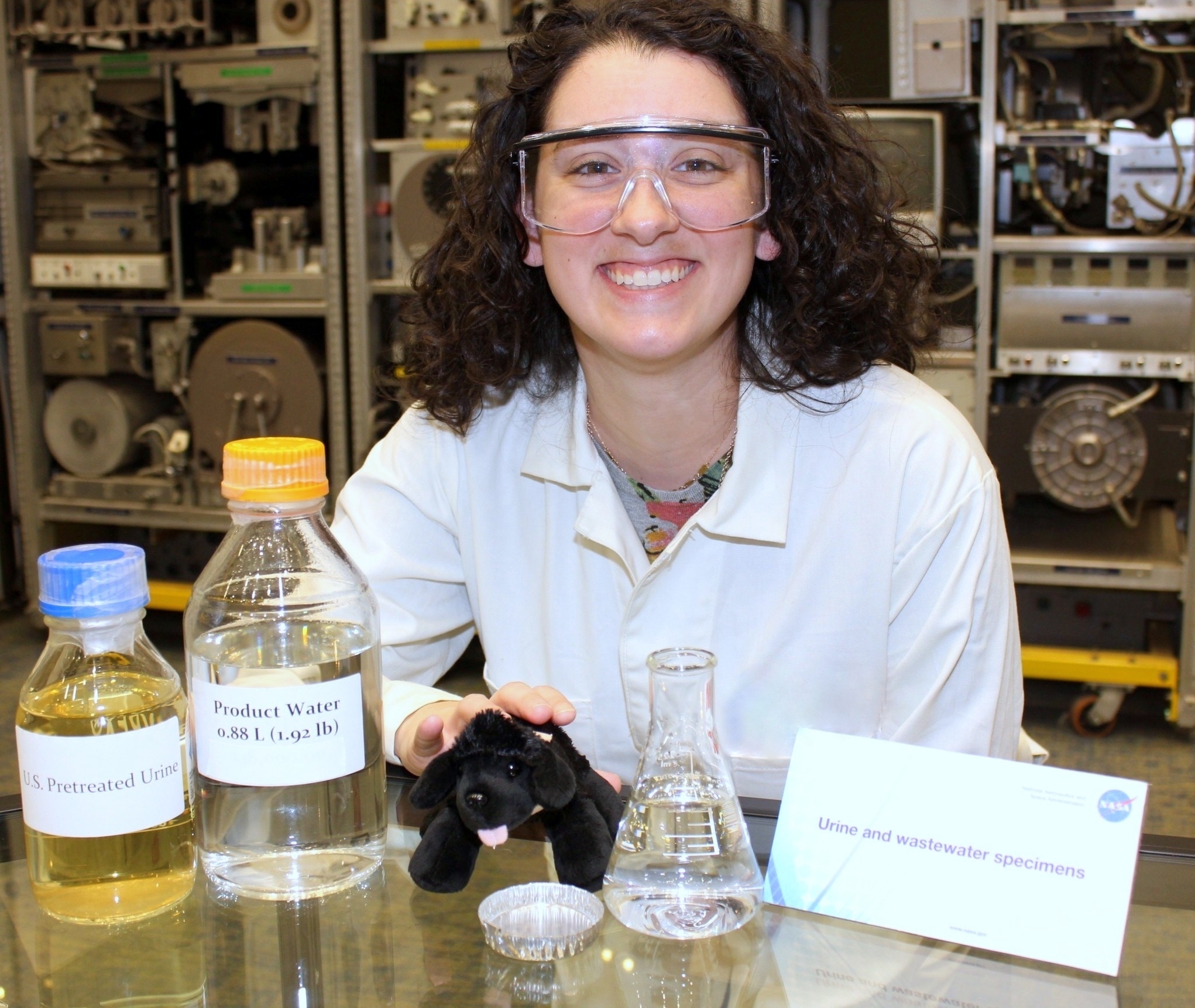In This Week’s Star
- Director’s Corner: Think Different
- Marshall Center Director Jody Singer Discusses Her Vision for Marshall’s Future at All-Hands Meeting
- Marshall to Host Panel Discussing Agency’s 60th Anniversary on Sept. 27
- Racin’ the Station at Marshall Set for Sept. 29
- New Satellite Antenna Receiving Station Unveiled at Marshall
- Partnership, Teamwork Enable Landmark Science Glovebox Launch to Space Station
- NASA Marshall Leaders Present Industry, Advocate Awards
- Marshall Presents ‘Golden Eagle’ Awards to Fermi Instrument Team Members
- NASA, National Park Service Collaborate on Anniversary Awareness
- This Week in NASA History: The First Use of Transfer Orbit Stage – Sept. 25, 1992
- Obituaries
Director’s Corner: Think Different
After three decades of service to NASA, I’m humbled to be named director of Marshall Space Flight Center. When I started at Marshall in 1985 as a bright-eyed intern, I couldn’t have imagined the journey that would lead me to where I am today — starting as an engineer, working on the space shuttle, and later managing key projects and programs. I often talk about how I can attribute my success to mentors that helped me along the way — partnerships with a team of people that I built around me — and I’ll take that same approach to leading Marshall into a successful future.
As I look ahead, Marshall already has a strong team. Our employees are second-to-none and have consistently ranked Marshall a “Best Place to Work,” but we can’t stop there. We must continue to strengthen our workforce by focusing on hiring practices that bring in the next generation of talent — hiring based on our needs and not on vacancies. This will ensure a strong, diverse workforce that fosters next-generation leaders that will be ready to lead and deliver in the coming era.
One area we can improve is cultivating partnerships. We have to be creative in the way we partner with industry, academia and other agencies. It’s the future of this industry, and we can’t rely on partnerships buried deep in our organizations; we have to bring them to the forefront. A great example is our partnership with Team Redstone, where we share skills, resources and ideas cultivating a unique community where we all thrive.
We need a strong team and partnerships to meet our commitments and deliver on our missions — with NASA’s Space Launch System, the International Space Station and science, as well as continuing to provide exceptional institutional support. We have a center strategy we call our Plan to Thrive that will take Marshall into the future, but we have to deliver on our milestones today in order to see tomorrow.
We have to think differently using this strategy, focusing on people, processes, pursuits and infrastructure. This will look different for each organization, but in essence, it’s about recognizing ways we can be more effective in our mission, and taking the steps to make those changes. For example, how we’re implementing the Flexible Work Day initiative to save money while also improving work-life balance.
The game has changed, and we need to change with it. We have to be an agile and flexible organization to thrive in today’s ever-evolving space industry. I’m confident we can make deep space human exploration possible — together — one relationship, one partnership at a time.
Marshall Center Director Jody Singer Discusses Her Vision for Marshall’s Future at All-Hands Meeting
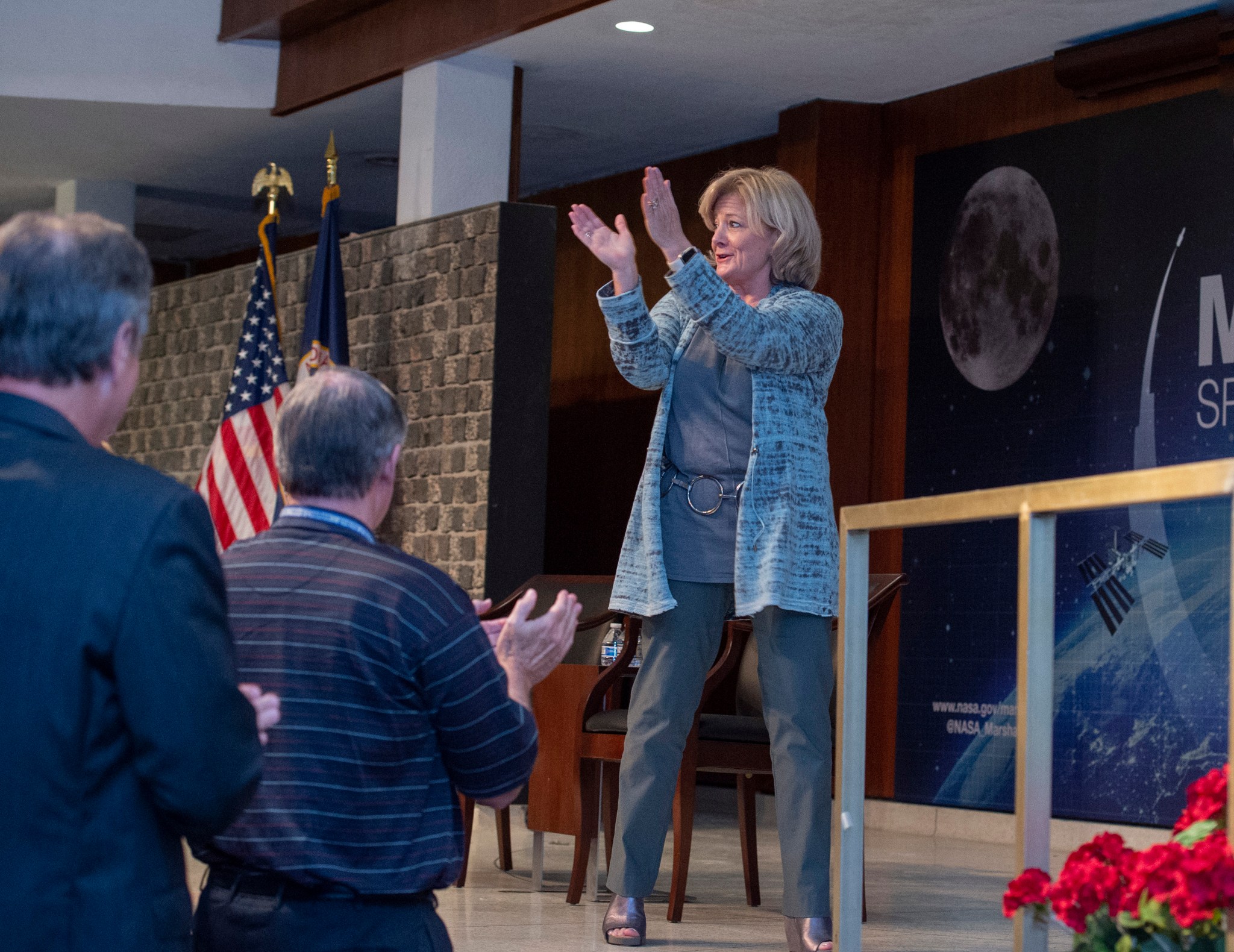
At a Sept. 24 All-hands meeting, NASA Marshall Space Flight Center Director Jody Singer addresses team members for the first time since being named center director Sept. 13. Singer stressed the importance of delivering on NASA’s mission, strengthening Marshall’s workforce and cultivating partnerships. “I know there are a lot of things we do at Marshall, but you are at the heart of it,” Singer told team members. “Every job at Marshall Space Flight Center — no matter what you are working on — all of what you are doing is making a difference now and in the future. Whether it be commercial crew, science on the International Space Station, payloads and everything we are doing to support the Space Launch System — it’s all a part of the mission and what we have to do to move forward.” Singer also updated the workforce on progress with SLS hardware, infrastructure around the center and Marshall’s Plan to Thrive — the center’s strategy focusing on people, processes, pursuits and infrastructure. (NASA/Emmett Given)
Marshall to Host Panel Discussing Agency’s 60th Anniversary on Sept. 27
To commemorate NASA’s 60th anniversary, Marshall Space Flight Center will host a panel discussion Sept. 27 from 10 to 11:30 a.m. in Morris Auditorium. All Marshall team members are invited to the event, which is themed, “Sixty Years of Smoke and Fire: Igniting Human Space Exploration through Engine Testing at Marshall and Stennis.”
Panelists include former Marshall Center directors Robert Lightfoot Jr. and Patrick Scheuermann and NASA Space Launch System program chief engineer Garry Lyles. The panel will be moderated by former Marshall Center acting director Gene Goldman.
President Dwight D. Eisenhower signed NASA’s founding legislation, the 1958 National Aeronautics and Space Act, on July 29, 1958. NASA considers its birthday to be Oct. 1, the day the agency opened for business.
The event will be broadcast live to Michoud Assembly Facility and Stennis Space Center. A question-and-answer session will follow the discussion. To submit a question, click here.
Racin’ the Station at Marshall Set for Sept. 29
By Will Bryan
The annual “Racin’ the Station” duathlon at NASA’s Marshall Space Flight Center will be held Sept. 29. The goal is to complete the course before the International Space Station completes one entire orbit around Earth, which takes approximately 91 minutes.
Athletes competing in the unique duathlon will run 3.14 km before biking 23 km and running one final 3.14 km leg. The start and finish line for both the race and each leg of competition is at Marshall’s Wellness Center Building 4315.
Participants have the option of competing in the entire course as an individual or partnering with someone to form a relay team — one person running while the other participates in the biking portion. Participants, spectators and volunteers with Redstone Arsenal access are all welcome to watch the race between man and machine.
For those with access to Redstone Arsenal, online registration is open through Sept. 27, and in-person registration will be available Sept. 28 at Fleet Feet Sports in Huntsville. Volunteers are needed Sept. 28 and Sept. 29. Anyone interested in volunteering should email Lara Gilbert.
Opening ceremonies will kick the event off at 7:45 a.m. at the Wellness Center, and exhibits from Marshall and other Team Redstone members will be on display in Building 4316 throughout the event. Attendees will also have the opportunity to see a life-sized chalk rendering of NASA’s Space Launch System rocket at the Building 4316 parking lot.
When the last person crosses the finish line, the race is officially over and will be followed by lunch and an awards ceremony at 11 a.m.
The event is organized by the Team Rocket Triathlon Club in Huntsville and the Marshall Association, a professional employee service organization at Marshall whose members include civil service employees, retirees and contractors. Racin’ the Station is the primary fundraiser for the Marshall Association’s scholarship fund.
For details on the race, visit the Racin’ the Station website.
Bryan, an ASRC Federal/Analytical Services employee, supports the Office of Strategic Analysis & Communications.
New Satellite Antenna Receiving Station Unveiled at Marshall
By Amanda Adams
On Sept. 21, NASA’s Marshall Space Flight Center held a ribbon cutting ceremony, unveiling a weather satellite receiving station recently installed in front of Marshall Activities Building 4316. The new addition helps Marshall scientists and the weather forecasting community tap into the revolutionary data provided by NOAA’s most advanced series of geostationary weather satellites, or GOES-R, and reach its full potential.
Earth scientists at Marshall depend on GOES data to advance understanding of Earth’s weather and to deliver new forecasting, warning and disaster response tools to partnering organizations like NOAA’s National Weather Service.
“This receiving station continues the 20-year legacy of real-time access to geostationary weather satellite data supporting NASA Earth science research, data dissemination, and research to operations activities,” said Gary Jedlovec, chief of the Earth Science Branch of the Science and Technology Office at Marshall.
The most visible, and perhaps most intriguing, components of the ground system are two skyward-facing antennas. The 6.5-meter dish antennas are positioned to receive data from the newest satellites in the GOES constellation — GOES-16, which launched in 2016, and GOES-17, launched earlier this year. Together, GOES-16 and GOES-17 keep an eye on weather and environmental hazards from the west coast of Africa all the way to New Zealand.

“The capability to receive this data and analyze it for the benefit of all humanity shows how Marshall science plays an important role in supporting NASA’s mission,” said Paul McConnaughey, Marshall associate director, technical. “The measuring capabilities of several instruments on the GOES satellites were developed and pioneered by NASA. It will provide resources for our scientists to analyze for the next 20-plus years, and with the data publicly available, it can be used across the nation for the betterment of society.”
Public access to this data is available at https://www.goes-r.gov/.
Adams, an ASRC Federal/Analytical Services employee, supports the Office of Strategic Analysis & Communications.
Partnership, Teamwork Enable Landmark Science Glovebox Launch to Space Station
By Rick Smith
As the Japan Aerospace Exploration Agency‘s H-IIB rocket carries NASA’s Life Sciences Glovebox toward its berth on the International Space Station, hardware specialists at NASA’s Marshall Space Flight Center and their partners around the world are eager to initiate new, high-value biological research in Earth orbit.
The JAXA H-IIB rocket, hauling the state-of-the-art microgravity research facility and other cargo via the H-II Transport Vehicle-7, or HTV-7, successfully lifted off at 12:52 p.m. CDT on Sept. 22 from Tanegashima Space Center in southern Japan.
“The teamwork and global partnership that delivered this hardware have been simply amazing,” said Bobby Watkins, director of Marshall’s Human Exploration Development and Operations Office. “We can’t wait to see it installed on the space station to enable more high-value biological and physical science experiments, with untold benefits on- and off-world.”
Its launch, previously delayed by inclement weather and technical issues, marks a first for hauling bulky equipment to space. Roughly the size of a large fish tank, the Life Sciences Glovebox — 26 inches high, 35 inches wide and 24 inches deep, with 15 cubic feet of available workspace — is officially the largest flight hardware ever launched in a “soft-stowed” configuration in which the equipment is packed securely in protective foam.
The HTV-7 is expected to dock with the space station on Sept. 27. It will be installed on the Harmony module, where it will remain for several weeks. NASA TV coverage of the rendezvous is scheduled to begin at 5:30 a.m. CDT. Capture of the transport vehicle is scheduled for approximately 7 a.m.
“The Life Sciences Glovebox is on its way to the space station to enable a host of biological and physiological studies, including new research into microgravity’s long-term impact on the human body,” said Yancy Young, glovebox project manager at Marshall. “This versatile facility not only will help us better protect explorers on long voyages into deep space but could aid medical and scientific advances benefiting the whole world.”
Boeing engineers at Marshall modified a refrigerator-freezer rack to house the core facility, even using state-of-the-art, 3D-printing technology to custom design key pieces of the rack to secure the unit in its protective foam clamshell. Soft-stowing offers an efficient, low-cost alternative to conventional, hard-mounted cargo stowage, said Chris Butler, payload integration manager for the glovebox at Marshall — and could “open up new possibilities for other oversized flight hardware.”
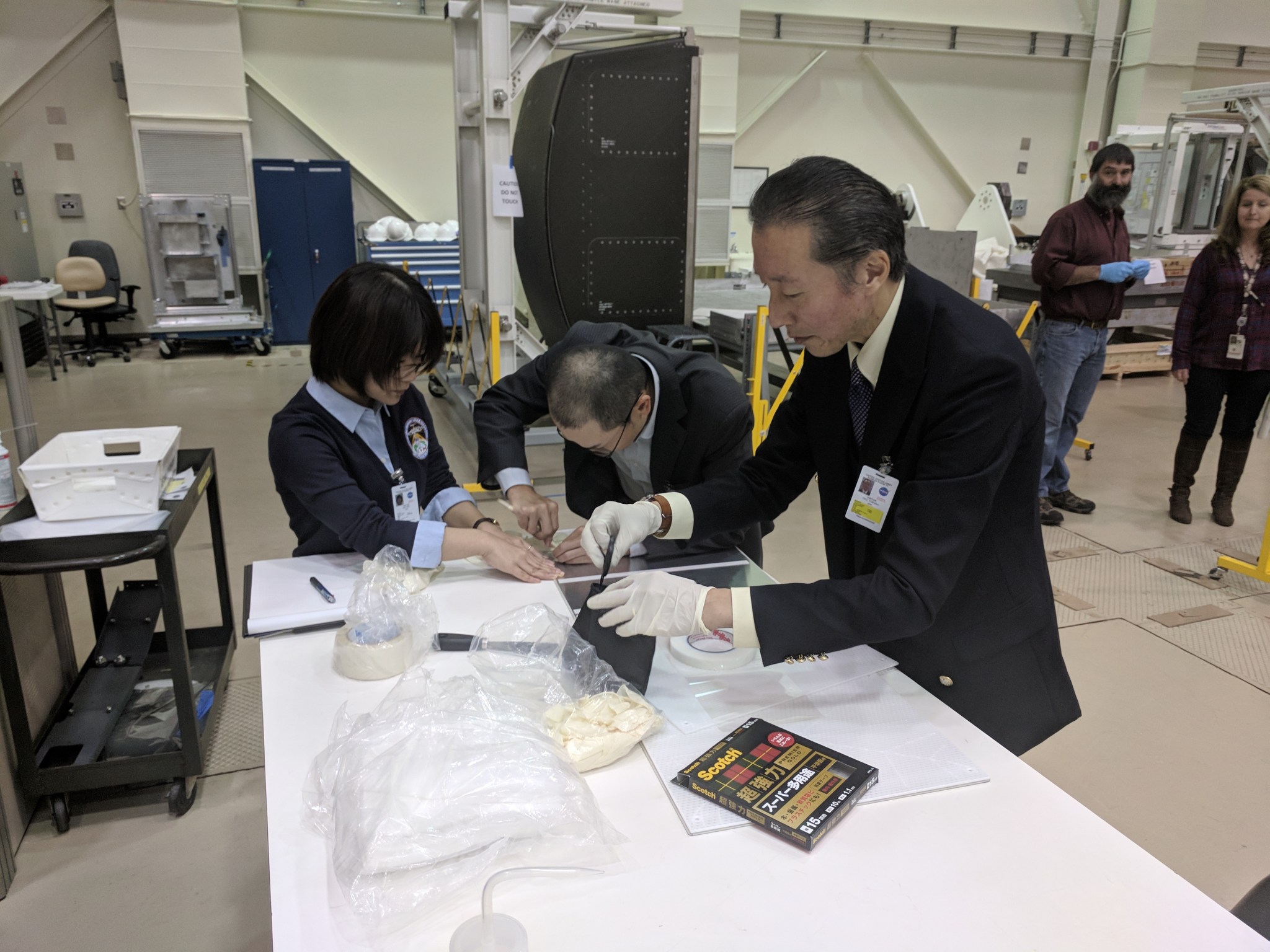
The Life Sciences Glovebox will be transferred to a zero-gravity stowage rack in the station’s Kibo module, where up to two crew members can conduct one or more experiments simultaneously, overseen in real-time by project researchers on Earth.
Originally built by JAXA and the Dutch firm Bradford Engineering, the glovebox was redesigned and upgraded in 2017. Engineers at Marshall contributed its secondary support structure and thermal control and power control systems and designed the facility’s power supply, air filtration, lighting, video and data recording and real-time downlink capability.
NASA is now determining the roster of science investigations lined up to make use of the facility. “We’ve already got more than a dozen glovebox experiments scheduled in 2019, with many more to follow,” Butler said. “That’s OK with all of us. We love to do good work.”
Marshall manages the Life Sciences Glovebox for NASA and monitors space station science and communications from its Payload Operations Integration Center, supporting the ISS Research Integration Office at NASA’s Johnson Space Center.
Smith, an ASRC Federal/Analytical Services employee, supports the Office of Strategic Analysis & Communications.
NASA Marshall Leaders Present Industry, Advocate Awards
By Jonathan Deal
On Sept. 20, NASA’s Marshall Space Flight Center presented its Industry & Advocate Awards for fiscal year 2018 during the Marshall Small Business Alliance Meeting at the U.S. Space & Rocket Center.
The awards reflect leadership in the aerospace business community and sustained achievement. Established in 2007 and sponsored by Marshall’s Office of Procurement and Small Business Office, the Alliance helps small businesses pursue NASA procurement and subcontracting opportunities.
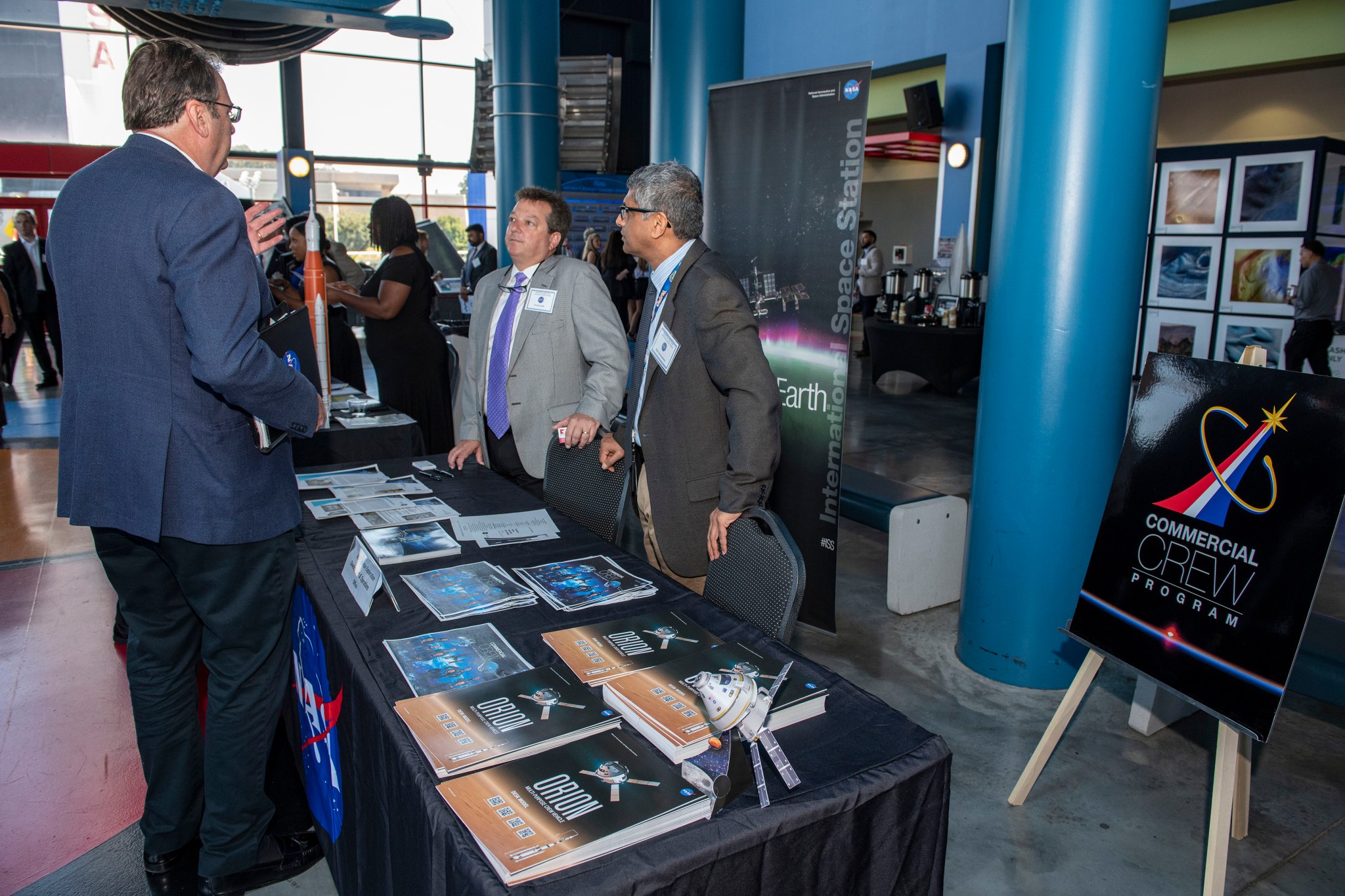
Aerojet Rocketdyne of Sacramento, California, was named Marshall’s Large Business Prime Contractor of the Year for support of the Small Business Subcontracting Programs under Marshall’s RS-25 Production Restart contract. Aerojet Rocketdyne was also awarded the Mentor-Protégé Agreement of the Year along with protégé company ICO Rally of Palo Alto, California, for their support of Marshall’s RS-25 Production Restart contract.
MTS of Huntsville was named Marshall’s Small Business Prime Contractor of the Year for support provided under the Marshall Integrated Program Support Services Program, Planning & Control task order.
Kord Technologies of Huntsville was named Marshall’s Small Business Subcontractor of the Year, for support to The Boeing Company of Chicago under the Space Launch System Stages contract. The Small Business Prime Contractor Excellence Award was presented to Cepeda Systems & Software Analysis of Huntsville for support provided under the Engineering Support to the Marshall Engineering Directorate contract.
Small Business Subcontractor Excellence Awards were presented to Alabama A&M University of Huntsville; Houston Precision Fasteners of Houston; KT Engineering of Madison, Alabama; Seabrook Solutions, LLC of Huntsville; TriVector Services Inc. of Huntsville; United Precision Corp. of Chatsworth, California; Waterfront Technical Services of Huntsville; and Yang Enterprises of Oviedo, Florida.
The Small Business Program Leadership Award was presented to Brad Bruce, manager of Global Supplier Diversity at Boeing; and David Diaddario, executive vice president and chief strategy officer at Radiance Technologies. Bruce and Diaddario were recognized for exemplary leadership in support of the NASA Small Business Programs while serving as chairpersons of the Marshall Prime Contractor Supplier Council and Small Business Executive Leadership Team, respectively.
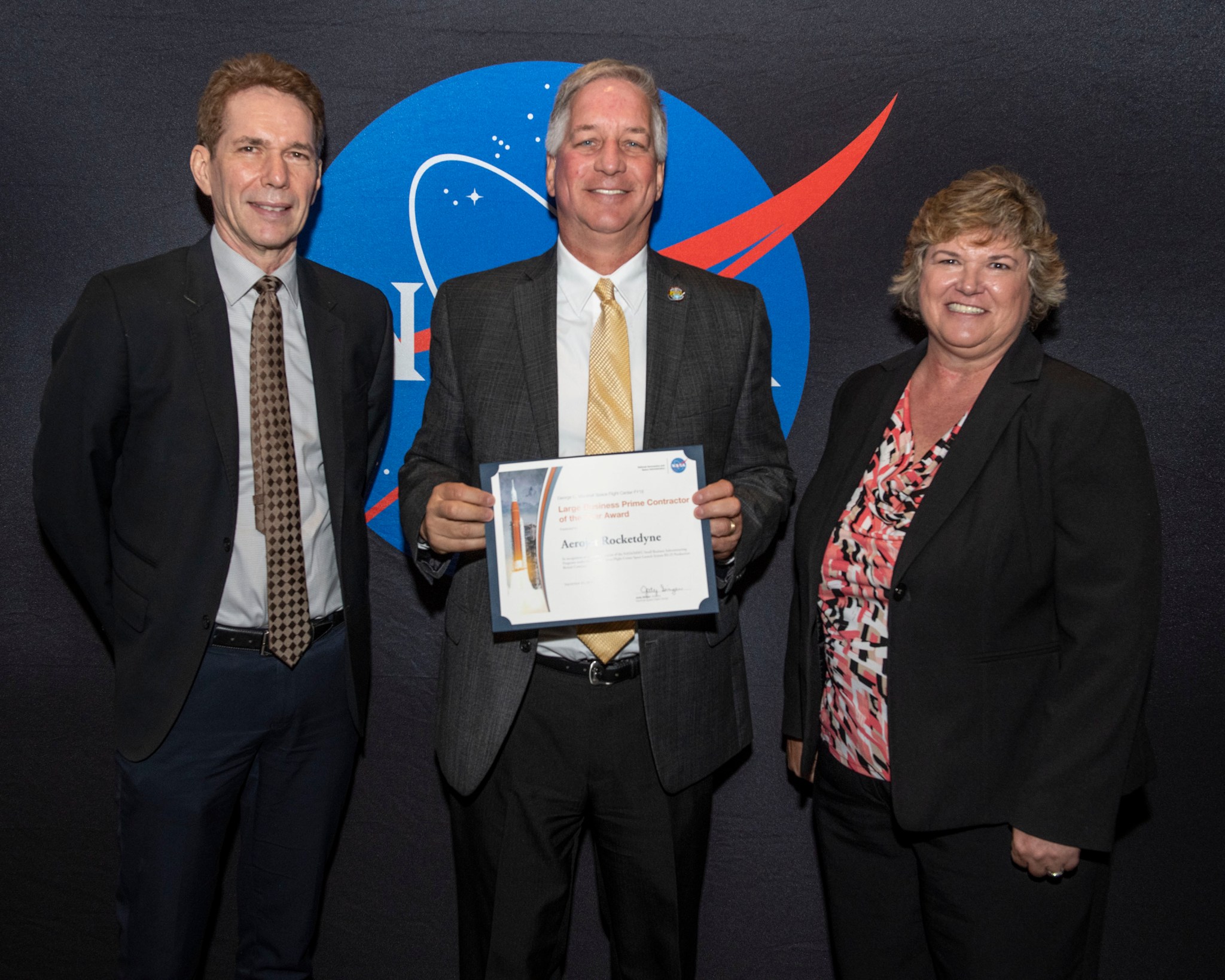
Anita Ayers, office chief in Marshall’s Facility Operations and Construction Office, and Ryan Hardy, contract specialist, were named the Procurement Team of the Year; Angela Lovelady, program analyst in NASA’s Space Launch System Program Planning & Control Office, was named Program Person of the Year; Nelson Olinger, office chief in Marshall’s Facilities Engineering Office, was named the Technical Person of the Year; and Kathy Rice, information technology specialist in Marshall’s Office of the Chief Information Officer, was named Small Business Technical Coordinator of the Year.
NASA civil service employees nominate eligible individuals and organizations for awards. A panel of NASA business procurement officials evaluates each nominee’s business practices, innovative processes, adoption of new technologies and their overall contributions to NASA’s mission and the agency’s Small Business Program.
Award recipients in the categories of Large and Small Business Prime Contractors of the Year; Small Business Subcontractor of the Year; Procurement, Technical, Small Business Technical Coordinator; and Program Persons and Teams of the Year become candidates for agency-level Small Business Industry Awards.
Deal, an ASRC Federal/Analytical Services employee and Marshall Star Editor, supports the Office of Strategic Analysis & Communications.
Marshall Presents ‘Golden Eagle’ Awards to Fermi Instrument Team Members
Three contractors at NASA’s Marshall Space Flight Center have been presented with Golden Eagle awards for their successful resolution of a critical technical issue tied to a temporary shutdown in March of a crucial instrument aboard the decade-old Fermi Gamma-ray Space Telescope.
Dr. Narayana Bhat, a research scientist at the University of Alabama in Huntsville; Bill Cleveland, a software engineer with the Universities Space Research Association’s Science & Technology Institute in Huntsville; and Lisa Gibby, Gamma-ray Burst Monitor operations manager with Jacobs Technology of Huntsville, received the awards Sept. 20. Golden Eagle awards honor team members’ exceptional commitment to mission assurance and flight safety.
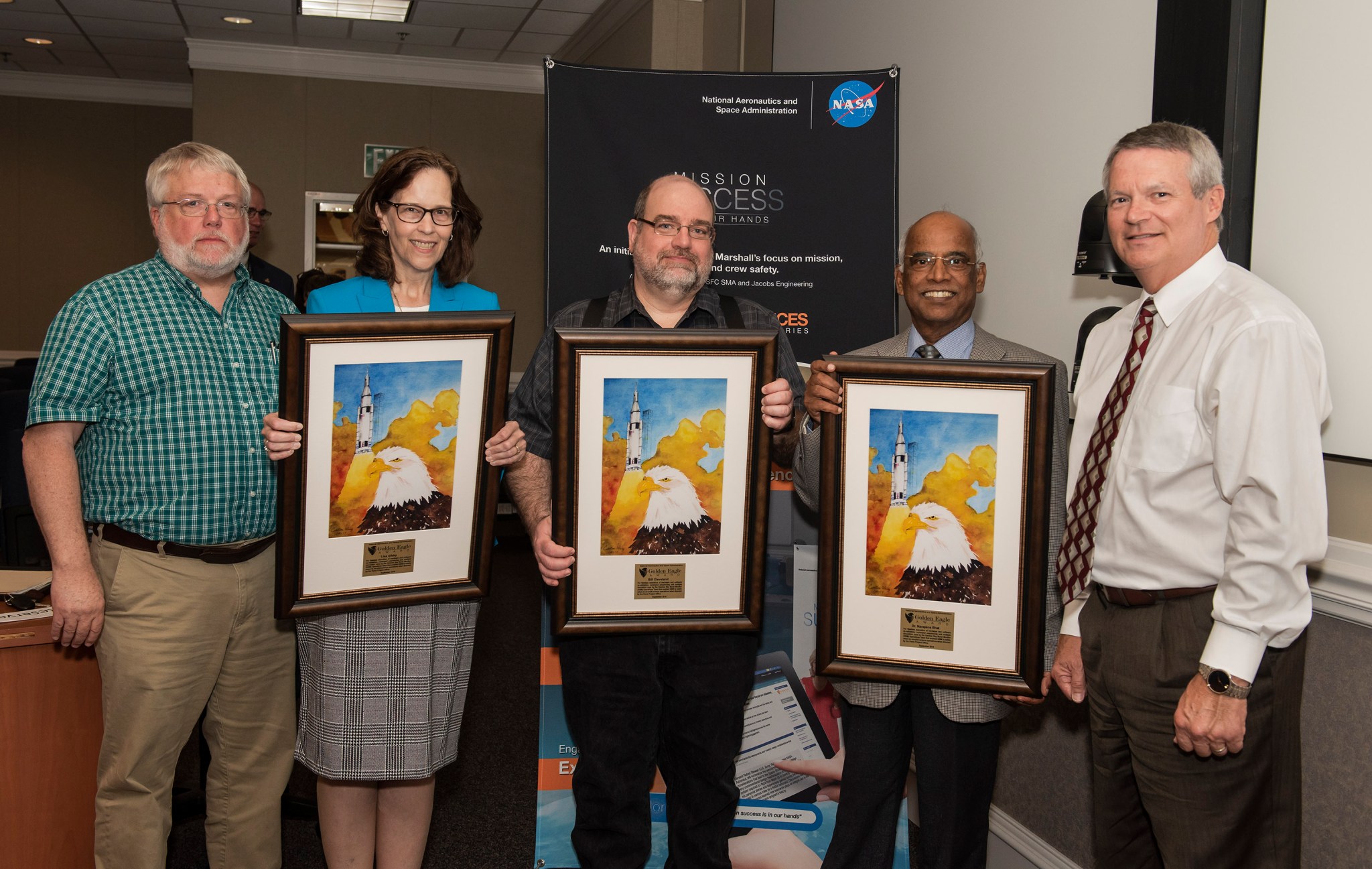
The three recipients support Fermi’s Gamma-ray Burst Monitor, the Marshall-managed instrument which identifies and tracks high-energy sources such as gamma-ray bursts, the brightest astrophysical events yet recorded across the cosmos.
When an anomaly in one of Fermi’s solar arrays put the orbiting science telescope into an automatic safe hold, it caused instruments on the satellite to be shut down. As flight operations personnel at NASA’s Goddard Space Flight Center worked to resolve the technical issue with the solar panels, the instrument team in Huntsville immediately started planning to reboot the Gamma-ray Burst Monitor, a process which involved creating, testing and verifying restart command procedures.
At the GBM Instrument Operations Center in the National Space Science & Technology Center, jointly operated by Marshall and UAH, the team maintains a test system functionally identical to the flight instrument’s onboard system hardware. It enables them to run through and verify specific commands prior to sending instructions to the actual instrument in space. When that test hardware was unable to properly communicate with ground computers for verification, Bhat, Cleveland and Gibby led the response team in devising a solution.
Bhat, a Fermi veteran who led extensive hardware tests prior to the satellite’s launch to space in 2008, partnered with Cleveland, an experienced software engineer who also had worked on Fermi since before its launch, to reprogram the test interface computer to interface with ground computers once more. Gibby authored command scripts to reset the instrument to its proper settings, oversaw the test run and — with project manager Steve Elrod — monitored the execution of commands to the flight unit, restoring it to full working order in March.
“I’m most proud that we’ve successfully operated the Gamma-ray Burst Monitor for 10 years so far, enabling scientists to make some outstanding discoveries,” Gibby said.
Bhat praised the exhaustive testing conducted by the instrument team leading up to Fermi’s launch and throughout the Gamma-ray Burst Monitor’s decade of operation on the telescope. “Each and every design element is functioning today as it was tested,” he said.
Cleveland agreed. “We’re a close team that works well together, and I’m proud of all we’ve accomplished,” he said. “We’re constantly analyzing the science data and working to improve our data products. I look forward to seeing what else we can accomplish.”
In 2018, Fermi marked a decade of successfully studying extremely energetic cosmic events, including gamma-ray bursts, pulsars, black holes and other secrets tied to the birth and evolution of the universe. Most recently, it was instrumental in discovering the electromagnetic counterpart of a gravitational wave — initially identified in August 2015 by the Laser Interferometer Gravitational Wave Observatory — a finding for which Marshall astrophysicist Dr. Colleen Wilson-Hodge, the Gamma-ray Burst Monitor’s principal investigator, was awarded the prestigious 2018 Rossi Prize from the American Astronomical Society.
Marshall developed the Gamma-ray Burst Monitor with the Max Planck Institute for Extraterrestrial Physics of Garching, Germany, and jointly operate and analyze its data, with mission oversight by Goddard.
The awards were presented during a “Mission Success is in Our Hands” lecture series, sponsored by Marshall’s Safety & Mission Assurance Directorate. The series is designed to strengthen Marshall’s focus on all aspects of crew, hardware and mission safety. All Marshall team members are eligible to be nominated. To learn more about the program, or to submit a coworker for consideration, click here.
NASA, National Park Service Collaborate on Anniversary Awareness
By Jessica Brodt
NASA and the National Park Service are collaborating on a new summer blog series celebrating the 50th anniversary of the National Trails System, the 60th anniversary of NASA and the 50th anniversary of the Apollo 11 Moon landing.
Similar to the Flat Stanley campaign popular among school children, the blog features a stuffed toy dog visiting NASA centers for astronaut training and launching to the International Space Station on a four-month expedition. The stuffed canine commemorates the famed Newfoundland dog of the Lewis and Clark expedition from 1804-06. Owned by Meriwether Lewis, it was the only animal to complete the two-year trek across the United States.
The plush pooch highlights the similarities of preparing for long-duration missions of exploration and discovery, much like Lewis and William Clark did. The dog blog also encourages students to pursue careers in the STEM fields of science, technology, engineering and math.
NASA and the National Park Service have worked together before, including for the 2017 total solar eclipse, the Earth to Sky interagency partnership, and other activities supporting science, applied science and internship opportunities. This current effort highlights aspects of exploration, science and discovery, each found in our nation’s earliest explorers to today’s astronauts living and working in space.
The four-legged friend visited NASA’s Marshall Space Flight Center over the summer and was photographed with members of the workforce as they shared how Marshall contributes research, technology and teamwork to achieve NASA missions. Three high-profile locations were selected: the Payload Operations Integration Center, the Environmental Control and Life Support System and the U.S. Space & Rocket Center, Marshall’s official visitor center.
Following the visit, the cuddly canine was launched to the International Space Station during a commercial resupply mission. While in space, the dog and fellow crewmembers will now photograph sections of the 3,700-mile-long Lewis and Clark National Historic Trail to promote protection and encourage visitors to travel the National Trails System, consisting of more than 1,000 trails across 50 states.
You can follow the dog’s adventures at https://www.nps.gov/lecl/planyourvisit/seaman-jr-lewis-and-clark-pups.htm and view the space station at NASA’s Spot the Station.
Brodt, a former summer intern at Marshall, supported the Office of Strategic Analysis & Communications.
This Week in NASA History: The First Use of Transfer Orbit Stage – Sept. 25, 1992
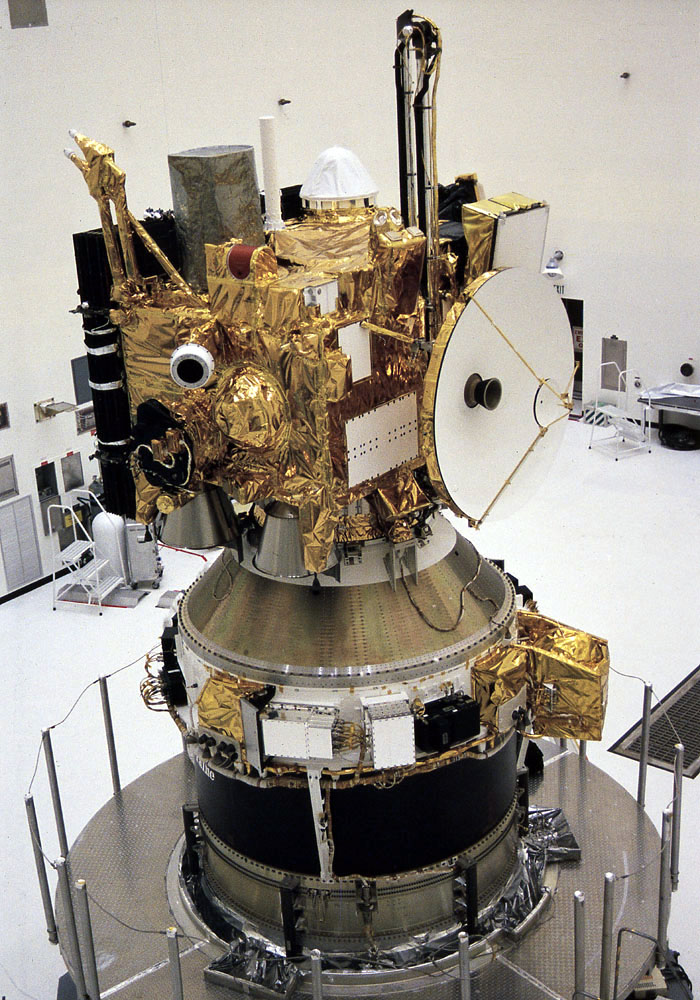
This week in 1992, the Transfer Orbit Stage, or TOS, a single-stage, solid propellant upper stage vehicle used to propel a spacecraft from low-Earth orbit on journeys to geostationary orbit or toward interplanetary destinations, was used for the first time with the launch of the Mars Observer aboard a Titan III launch vehicle. Here, the Mars Observer and TOS payload are ready for final integration in the Titan III nose fairing. The TOS was managed by NASA’s Marshall Space Flight Center. The NASA History Program is responsible for generating, disseminating, and preserving NASA’s remarkable history and providing a comprehensive understanding of the institutional, cultural, social, political, economic, technological and scientific aspects of NASA’s activities in aeronautics and space. For more pictures like this one and to connect to NASA’s history, visit the Marshall History Program’s webpage. (NASA)
Obituaries
Ronald C. Brock, 89, of Harvest, Alabama, died Sept. 16. He retired from the Marshall Center in 1997 as a technical manager.


